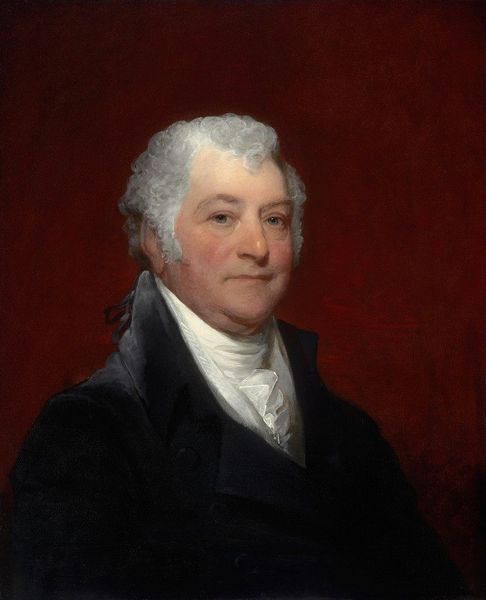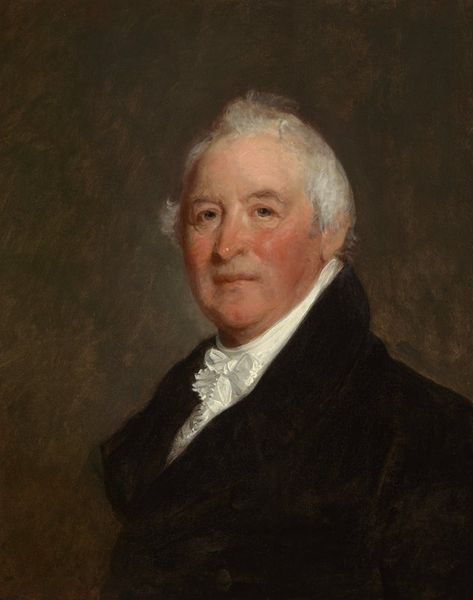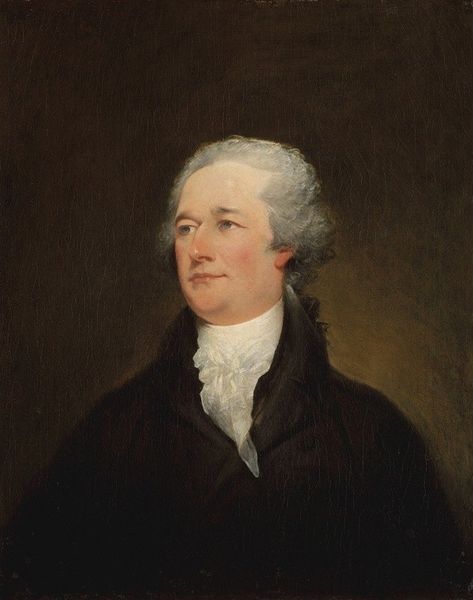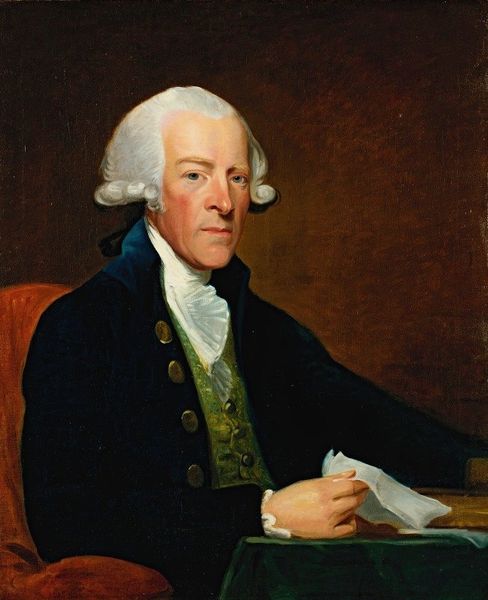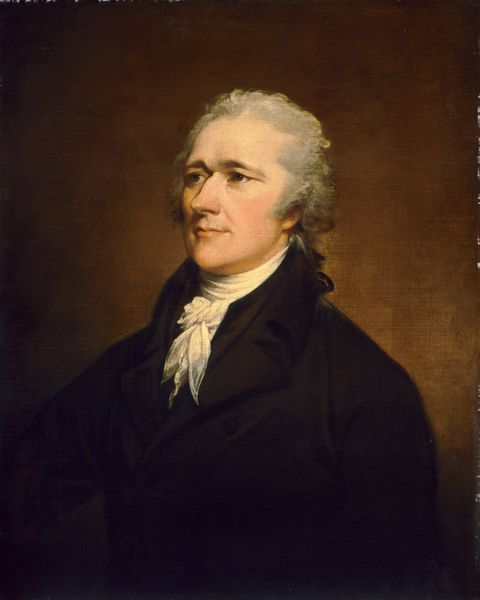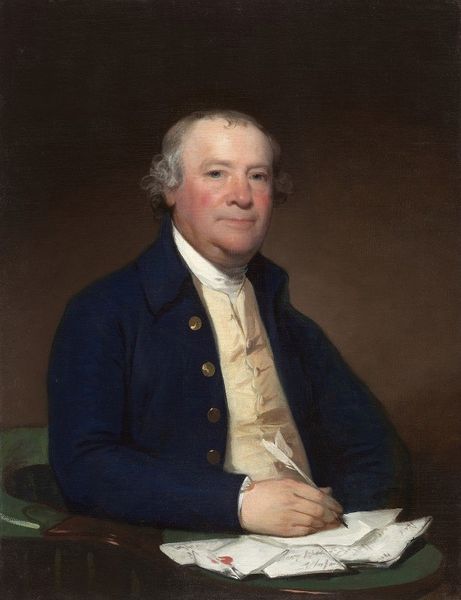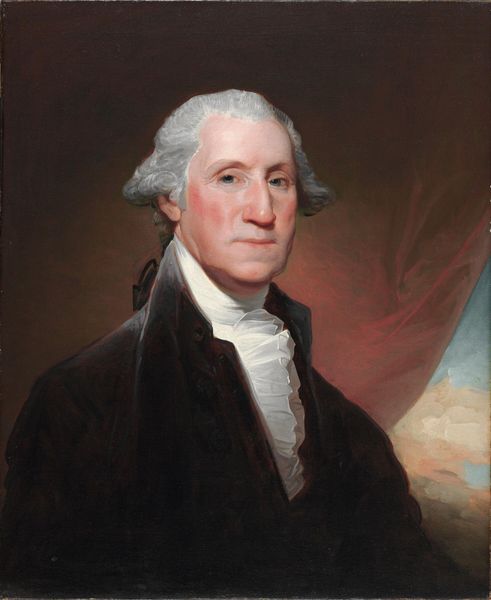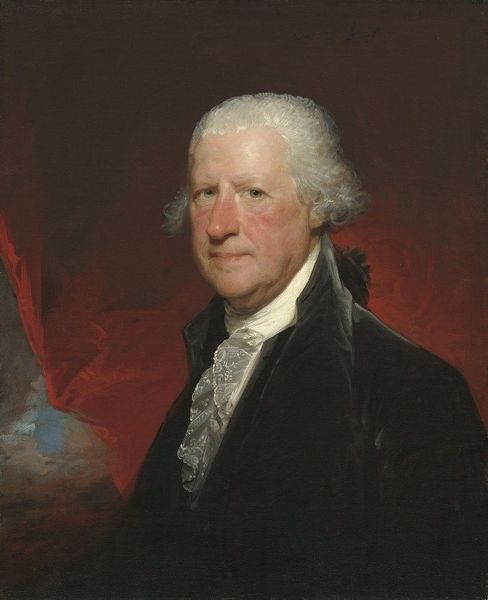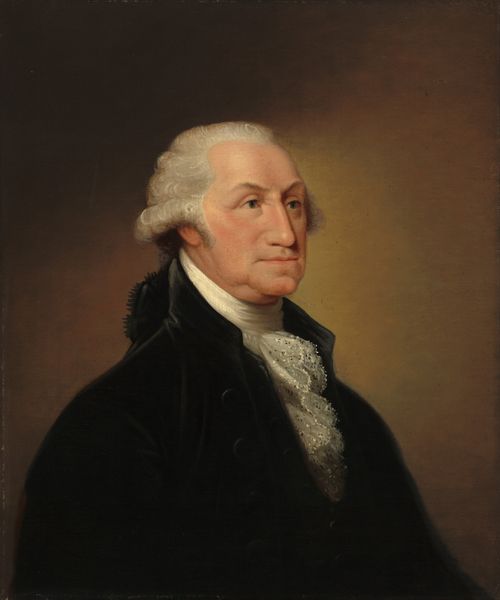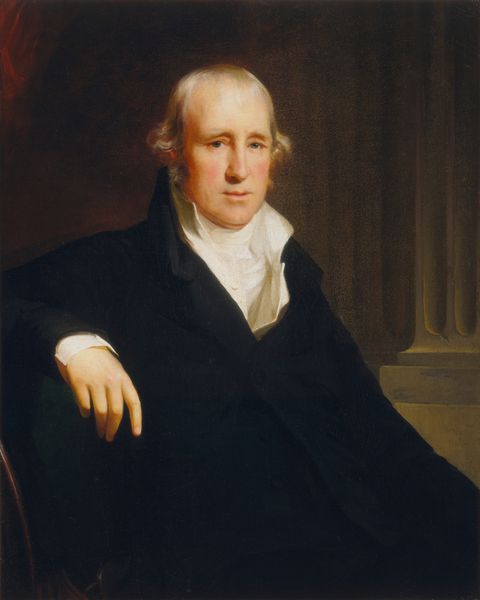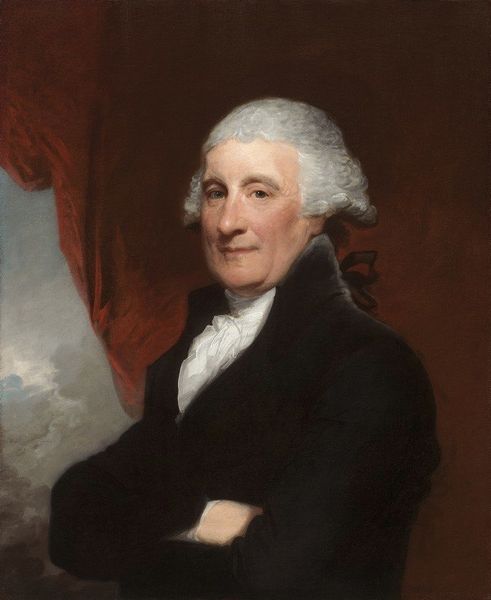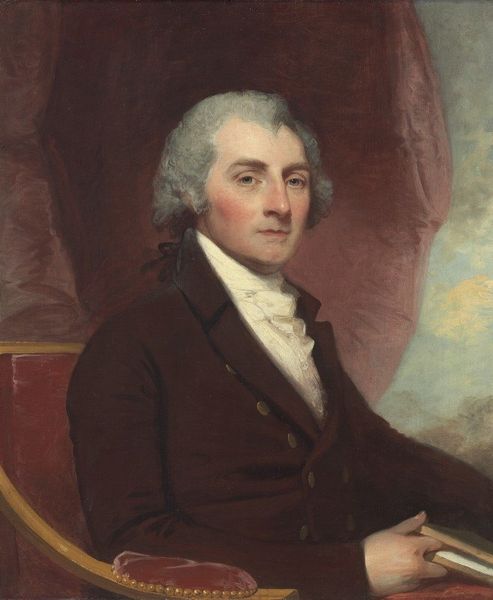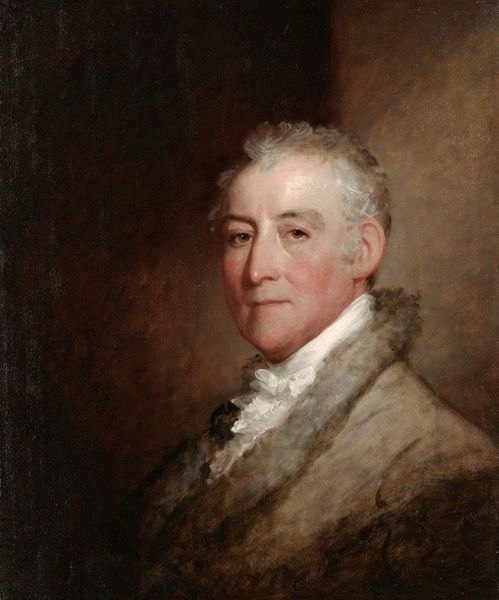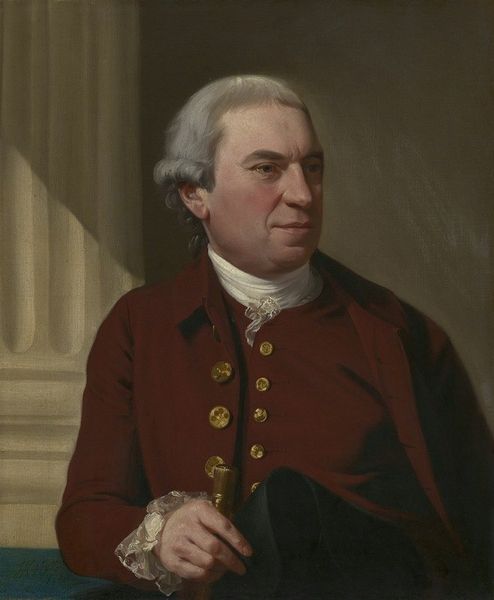
painting, oil-paint
#
portrait
#
neoclacissism
#
portrait
#
painting
#
oil-paint
#
history-painting
#
academic-art
#
realism
Copyright: Public Domain: Artvee
Editor: We're looking at Gilbert Stuart's "Benjamin Tappan," created in 1814. It's an oil painting and strikes me as a fairly straightforward portrait. What catches your eye, viewed through a formal lens? Curator: The portrait is, indeed, representational. I'm drawn to the subtle interplay of light and shadow across Tappan's face. Notice how Stuart employs chiaroscuro to sculpt the planes of the face, creating a sense of depth and volume. How would you describe the color palette employed in this work? Editor: It's quite restrained, mostly muted browns and blacks, except for the white of the cravat. The lack of bright colours gives it a very serious tone. Why this colour choice? Curator: Precisely. Stuart strategically limits his palette to direct our attention to the psychological space of the subject. Consider the formal function of the stark white cravat. How does its positioning influence your gaze? Editor: It acts like a visual spotlight, directing your focus immediately to the face. That's very clever use of pictorial composition! It gives prominence to Tappan's face and enhances its role as the focal point of the entire portrait. I hadn't thought of it that way. Curator: Precisely! Further notice the positioning and relative proportions of the dark ground, the face and his black clothing. What might be inferred? Editor: Well, it does appear to create a classical structure. I guess my initial reaction missed some depth. It's interesting how breaking it down like this makes you see it so differently. Curator: Exactly. Through careful arrangement and reduction, the subject transcends specificity and evokes more. We see how form enables us to go beyond subject and time.
Comments
No comments
Be the first to comment and join the conversation on the ultimate creative platform.
